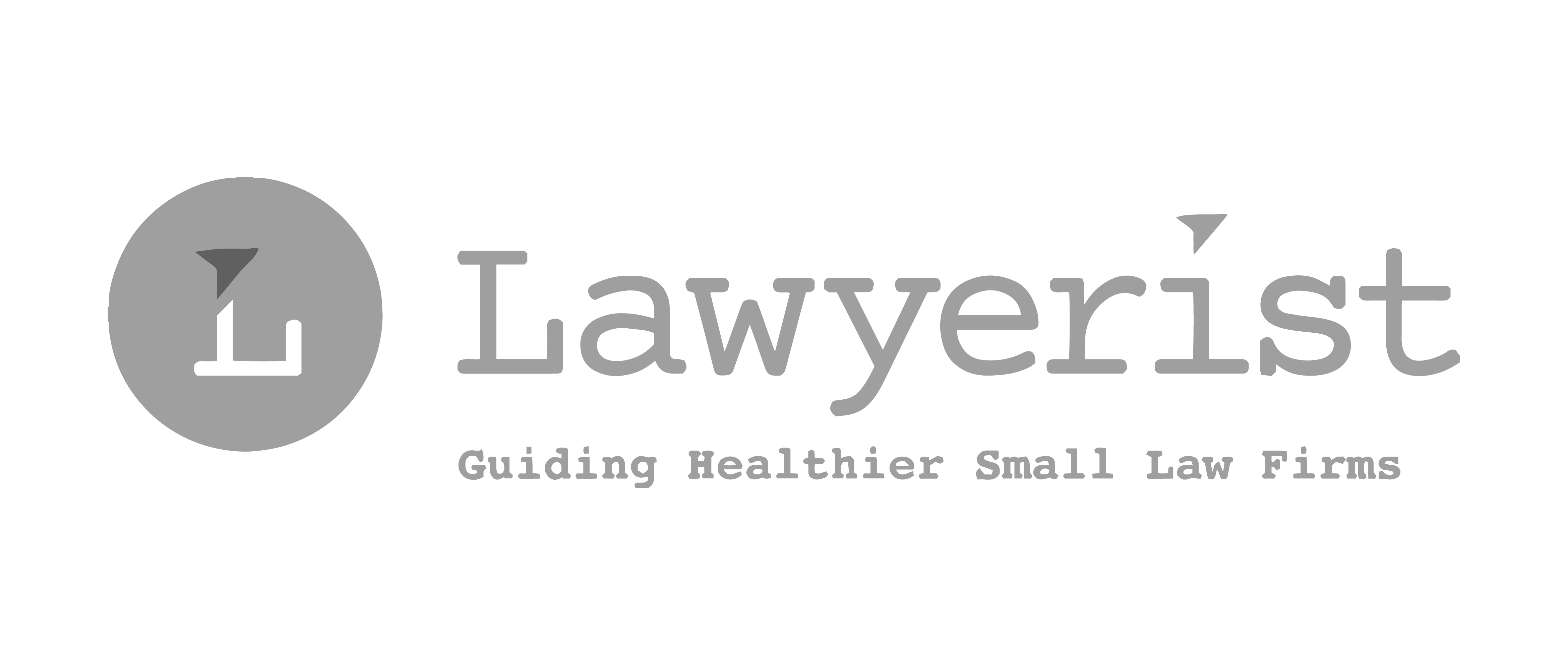5 Time Management Tips for Law Firms

Just about everyone wishes they had more time—and this is especially true in the legal profession, where endless to-do lists are the norm and work lives can spill over into personal time.
An unmanaged workload, though, can lead to serious burnout and missed deadlines. And more than just added stress, lack of time management puts your firm’s profitability and reputation at risk.
It’s one thing to say you want to manage your time better, but putting that into practice is quite another. Time management can be challenging, especially as legal practices balance billable hours with essential (but time-consuming) non-billable tasks.
Take heart. With the right foundation and the right tools, legal professionals can make the most of their time to stay on top of tasks and breathe a little easier.
Improve your time management strategy with these 5 tips
To improve your time management strategy—and prioritize your tasks correctly—you need to see the big picture for your law firm: upcoming projects, client needs, law firm goals, and more. From there, better time management is just around the corner.
1. Make a list of everything—EVERYTHING—you need to do
Sit down and list out all the tasks you need to do—today, tomorrow, next week, and onward. Then list out how they need to be done. Do these tasks require multiple stakeholders? Do you have compounding projects, where one task has to be done first?
It’s okay if the list seems overwhelming. Legal staff carry a lot of information around in their heads about both billable and non-billable projects. Writing them all down is the best way to open up the valuable mental real estate that’s typically consumed by mentally tallying up your tasks.
2. Move beyond the traditional to-do list
Once you have your to-do list, it’s time to make it better. Traditional to-do lists have a few issues getting in the way of your productivity for a couple of reasons:
- They’re time-consuming: Writing the same tasks down for different cases can end up duplicating your efforts.
- They’re overwhelming: Staring at a long list (especially one that keeps growing) makes it difficult to feel a sense of accomplishment.
- They’re inflexible: A traditional to-do list is hard to adapt for complex projects that require multiple stages, steps, and contributors along the way.
- They’re easy to misplace: Traditional to-do lists are often written down on paper, sticky notes, planners, and other things that are easy to lose.
- They’re difficult to track: Checking off a task may seem satisfying, but it doesn’t leave any sort of metric that helps you track your time management over time.
Consider how you’re creating your to-do lists. Some people use spreadsheets for their to-do lists, which, while better than paper, still have significant drawbacks. After all, spreadsheets can quickly become overwhelming for multiple pages or tasks, and manually updating spreadsheets can be tedious.
Additionally, spreadsheets aren’t built to integrate with other systems or documents, so you’ll always be toggling between systems to keep up.
Instead of the traditional to-do list, consider alternatives for tracking tasks, such as…
3. Practice management software (AKA, your time-management best friend)
Leaning on your practice management software for managing your to-do list is a smart way to:
- Avoid duplicate or unnecessary work with automated task templates
- Increase visibility and communication surrounding priorities
- Track time spent on tasks more easily
- Manage deadlines and deliverables
- Provides context to to-do lists with easy access to client matters
- And more
In short, legal-specific practice management software combines the utility of project management, such as time tracking and kanban boards, with an integrated client database. As an integrated system, it saves users time by tracking tasks and related data all in the same system.
4. Be realistic about how much you can do in a day
Sometimes, everything feels like a top priority. But there are only so many hours in the day, and when everything is urgent and every client needs special attention, it’s hard to know where to begin.
Practice choosing your top three priorities for the day to help you stay on track with the things that matter most.
Start using a time tracker to monitor the time spent on each task . This will help you build out reasonable expectations for the tasks you need to complete, especially if you have similar tasks pop up over time.
By understanding your baseline time constraints, you can avoid assigning priorities that result in an 18-hour workday.
5. Work on clear communication
While the right system can help you visualize and track your projects, it’s important to collaborate with your team on priorities.
When someone hands you a task that's due ASAP, take a moment to get everyone on the same page. Seek clarity from colleagues and managing partners on which tasks need to be prioritized, versus which ones can be delegated or pushed back.
This takes just a few minutes, but it creates clear expectations and ensures that everyone is moving toward the same goals. The more transparent you are, the easier it is to build consensus.
Build the right system with efficient tools
Even the most productive schedule will crumble in the face of outdated software and an inefficient workflow. The right tools will help you cut out unnecessary steps, reduce pain points, and minimize stress.
Here are three examples of areas where you can easily make gains:
Document management
If your files are constantly disorganized, it will take you longer to find what you need (not to mention, it can be a security and compliance hazard). Consider switching to a legal-friendly document management system that provides top-notch security for confidential information, as well as the tagging and classification system to keep documents exactly where they need to be.
Client communications
Legal staff members send and receive countless emails every single day. For client communications, there are several ways to streamline communications.
Legal client relationship management (CRM) software enables firms to build email drip campaigns to guide prospective clients through the intake process and address common FAQs. Legal CRMs can also send follow-ups reminding clients of upcoming appointments or court dates, keeping everyone on track.
Client portals are another great way to facilitate client communication, allowing designated clients and team members to access communications, documents, and billing information in one secure place.
Automated document drafting
What if you never had to copy and paste documents again? What if you didn’t have to download, save as a new file, and update information for every single client document?
Automated document drafting can reduce the time it takes to create pleadings, notices, subpoenas, and more. You can bring up a document template with the click of a button and simply plug in the pertinent information stored in your system, reducing the risk of manual data entry errors. (And as an added bonus, some software can attach billable time to documents as you create them.)
Make the most of your time with Rocket Matter
You have enough on your plate as it is. Rocket Matter’s legal practice management system is designed to help you take back your time and spend it on the things that matter.
Ready to take on your to-do list without the stress? Move forward with Rocket Matter. Schedule a demo or start a free trial today.
Related Resources

How to Increase Your Profits with Rocket Matter
Lawyers in firms of all sizes struggle to finish the work for the day in a reasonable amount of time. With document creation, non-billable tasks, and time spent following up with current and potential clients, the workday quickly turns from a planned eight-hour day into a twelve-hour one.

How to Master Your Law Firm’s Time and Billing
Lawyers have a heavy workload. With so many clients and their various needs, it’s easy to put tedious administrative tasks like time tracking and billing on the back burner.

6 Billing Strategies to Grow Your Law Firm
Scaling your law firm doesn’t just mean adding more lawyers or increasing your number of clients. The best way to boost your law firm’s finances is to minimize your non-billable hours and make sure that every hour of your day is accounted for.
Share post:









